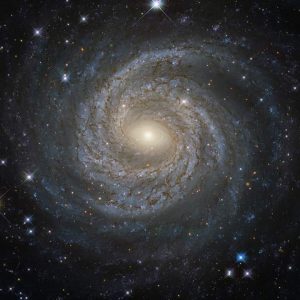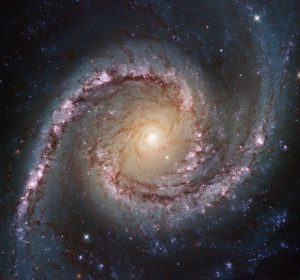galassia di Seyfert
Vortici Maestosi da Hubble
Questa immagine mozzafiato ripresa dal telescopio Hubble mostra NGC 1566, una splendida galassia situata a circa 40 milioni di anni luce di distanza nella costellazione del Dorado. NGC 1566 è una galassia a spirale intermedia: anche se non ha una regione di stelle ben definita a forma di barra al suo centro, come le spirali barrate, non è nemmeno una spirale non barrata. Continua a leggere
Come un fiocco di neve

Ogni galassia a spirale è unica, come i fiocchi di neve: nessuna è uguale all’altra. Questo è dimostrato dalla sorprendente galassia a spirale visibile di faccia NGC 6814, il cui nucleo luminoso e gli spettacolari bracci avvolgenti, che si dispiegano con formazioni intricate di polvere oscura, vengono ripresi in questa splendida immagine del telescopio Hubble. Continua a leggere
